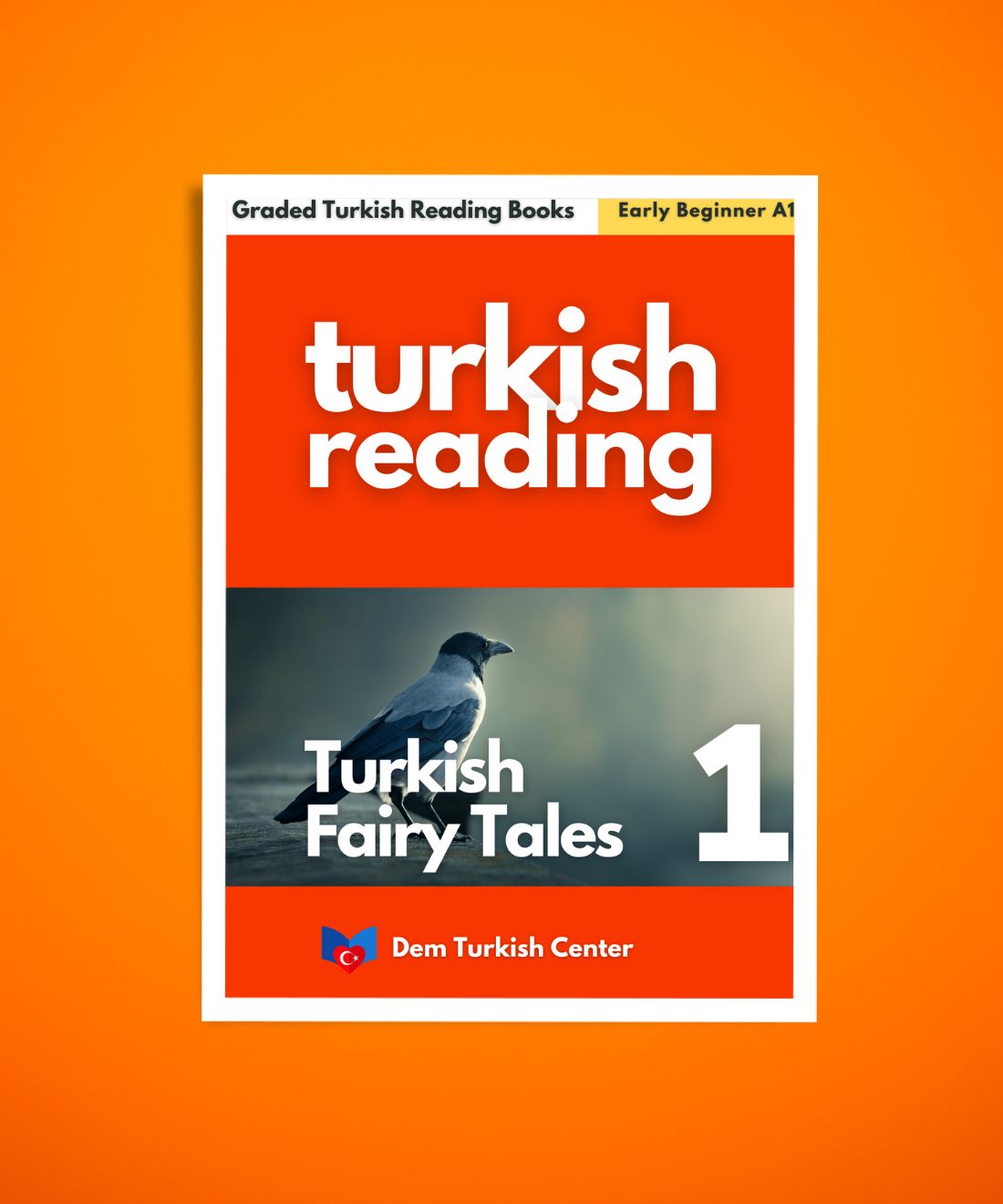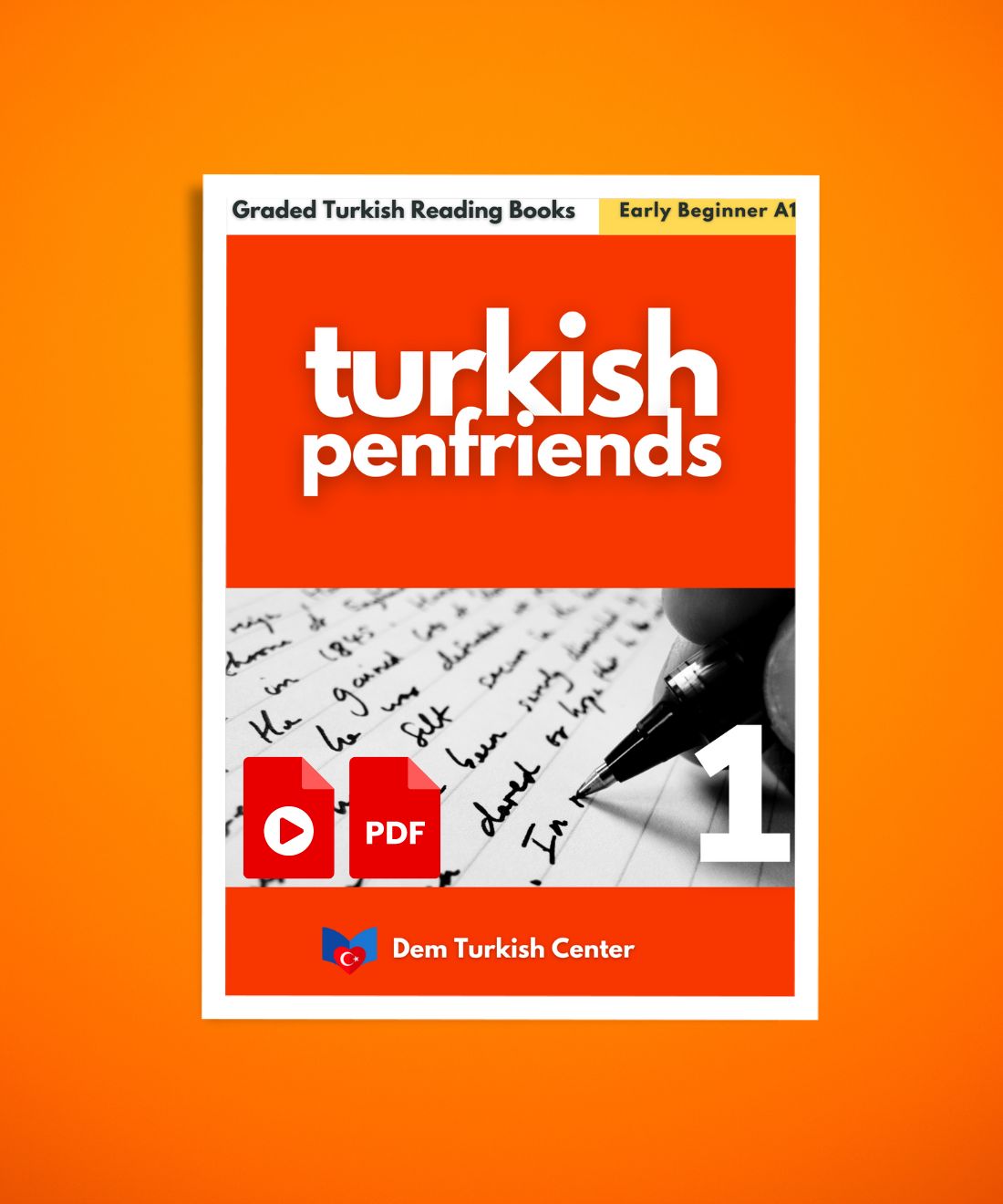
Most Common Turkish Grammar Rules
Turkish grammar has several key aspects that form the foundation of understanding and speaking the language effectively. Here are some of the most common and essential Turkish grammar rules, with detailed explanations and examples:
Most Common Turkish Grammar Rules
1. Word Order in Turkish
The typical word order in Turkish is subject-object-verb (SOV), unlike English which follows subject-verb-object (SVO).
In Turkish, the verb always comes at the end of the sentence.
Example: Ben bir elma yedim. I ate an apple.
Subject: Ben - Object: Elma - Verb: Yedim
2. Vowel Harmony in Turkish
Vowel harmony is a core feature of Turkish, meaning that vowels within a word tend to harmonize to make pronunciation smoother. Turkish has two types of vowel harmony: front vs. back vowels and rounded vs. unrounded vowels. This affects suffixes.
Example: "Kitap" (book) becomes *Kitaplar* (books), but "ev" (house) becomes "evler" (houses).
The suffix changes based on vowel harmony.
Learn the vowel harmony in Turkish!
3. Agglutination (Use of Suffixes) in Turkish
Turkish is an agglutinative language, meaning that various grammatical functions like tense, person, possession, and case are added through suffixes rather than separate words.
Example: Okul (school) + da (in) = Okulda (in the school)
Ev (house) + im (my) = Evim (my house)
Download "Turkish Grammar Course 1 A1"
4. Verb Tenses in Turkish
Turkish verbs change based on tense. The most common tenses are the present continuous, past tense, future tense, and simple present. For example:
- Present Continuous: Geliyorum. I am coming.
- Past Tense: Geldim. I came / have come.
- Future Tense: Geleceğim. I will come.
- Aorist Tense: Gelirim. I come / will come.
Learn the basic verb tense in Turkish!
5. Noun Cases in Turkish
Turkish nouns change form depending on their grammatical role in the sentence. The language uses six cases: nominative (subject), accusative (object), genitive (possession), dative (indirect object), locative (location), and ablative (motion away).
- Nominative case: Kitap (book) – used as the subject
- Accusative case: Kitabı (the book) – used as the object when specific
- Genitive case: Kitabın (of the book)
- Dative case: Kitaba (to the book)
- Locative case: Kitapta (in/on the book)
- Ablative case: Kitaptan (from the book)
6. Personal Pronouns and Verb Conjugation in Turkish
Personal pronouns in Turkish are often omitted because verb conjugation clearly indicates the subject. The verb endings change based on the subject pronoun. For example:
- Ben geliyorum. I am coming.
- Sen geliyorsun. You are coming.
- O geliyor. He / She is coming.
Learn the pronouns (persons) in Turkish!
7. Negative Sentences in Turkish
To form negative sentences in Turkish, the suffix *-ma* or *-me* is added before the verb suffixes. For example:
Ben gelmiyorum. I am not coming.
Download "Turkish Grammar Course 1 A1"
8. Question Formation in Turkish
In Turkish, questions are formed by adding the question particle "mi" (or mı, mu, mü depending on vowel harmony) after the verb. The particle changes based on the last vowel of the word. For example:
- Film güzel. The film is nice. Film güzel mi?
- O kitap okuyor. He is reading a book. O kitap okuyor mu?
Learn the basic questions in Turkish!
9. Possession in Turkish
Turkish uses suffixes to show possession. Possessive endings are added to the noun to indicate ownership, and the possessed noun also takes a suffix when specific. For example:
Benim arabam (My car) – possessive suffix -m
Senin kitabın (Your book) – possessive suffix -in
Download this worksheet: "Possessive Suffix in Turkish"
10. Adjectives and Adjective Agreement in Turkish
Adjectives in Turkish do not change based on gender or number. However, they precede the noun they describe, similar to English. For example:
Güzel ev (beautiful house), Büyük arabalar (big cars)
Learn 50 basic adjectives in Turkish!
11. Pronouns and Demonstratives in Turkish
Turkish uses specific words for "this," "that," "these," and "those." These demonstratives are: Bu (this), Şu (that), O (that over there). For example:
- Bu araba çok güzel. This car is very beautiful.
- O ev uzakta. That house is far away.
12. Reflexive Verbs in Turkish
Reflexive verbs indicate that the action is being done by the subject to themselves. The reflexive marker is "-in" or "-n". For example:
Yıkanmak (to wash oneself) - Kendimi tanıtıyorum. (I am introducing myself).
13. Verb Moods (Imperative, Optative, Conditional) in Turkish
Turkish verbs have different moods to express commands (imperative), wishes (optative), and conditions (conditional). For example:
- Imperative: Gel! Come!
- Optative: Gideyim. Let me go.
- Conditional: Gelseydim. If I had come.
14. Compound Verbs in Turkish
Turkish frequently combines verbs with other words or particles to create new meanings. For example:
Geri gelmek (to come back) - Ara vermek (to take a break)
15. Pronoun Omission in Turkish
Because verb endings in Turkish indicate the subject, personal pronouns (like "I," "you") are often omitted unless for emphasis or clarity. For example:
Geliyorum. I am coming.
"Ben" (I) is not necessary because "-um" indicates the subject.
16. Relative Clauses in Turkish
In Turkish, relative clauses are created by adding specific verb suffixes, unlike English where words like "who" or "which" are used. For example:
Gördüğüm adam (The man that I saw)
The suffix -düğü* marks the clause.
17. Gerunds and Infinitives in Turkish
Gerunds are created by adding the suffix "-mek" or "-mak" to a verb stem. This forms the equivalent of the English infinitive ("to do something"). For example:
Yemek yapmak (To cook food). - Koşmak zorundayım (I have to run).
18. Comparison of Adjectives in Turkish
Comparatives are formed by adding the word "daha" (more) before the adjective, and superlatives are created by adding "en" (most). For example:
- Comparative form: Daha hızlı (faster)
- Superlative form: En büyük (the biggest)
Download this worksheet: "Comparison in Turkish
19. Postpositions in Turkish
Turkish uses postpositions (placed after the noun), unlike English which uses prepositions. Some common postpositions include "ile" (with), "için" (for), and "gibi" (like). For example:
Arkadaşım ile geldim. I came with my friend.
Senin için buradayım. I am here for you.
20. Verb Conjugations with Modal Verbs in Turkish
Modal verbs in Turkish, such as "istemek" (to want) and "zorunda olmak" (to have to), are used with infinitive verb forms. For example:
Gitmek istiyorum. I want to go.
Yapmak zorundayım. I have to do it.
Turkish grammar is characterized by its agglutinative nature, vowel harmony, and case system, among other things. By understanding these common grammar points, you'll have a strong foundation for forming sentences and expressing yourself clearly in Turkish.
Become a Dem Turkish Center member and get the full access the bookstore!
Thank you very much for your interest and visiting Dem Turkish Center bookstore!















